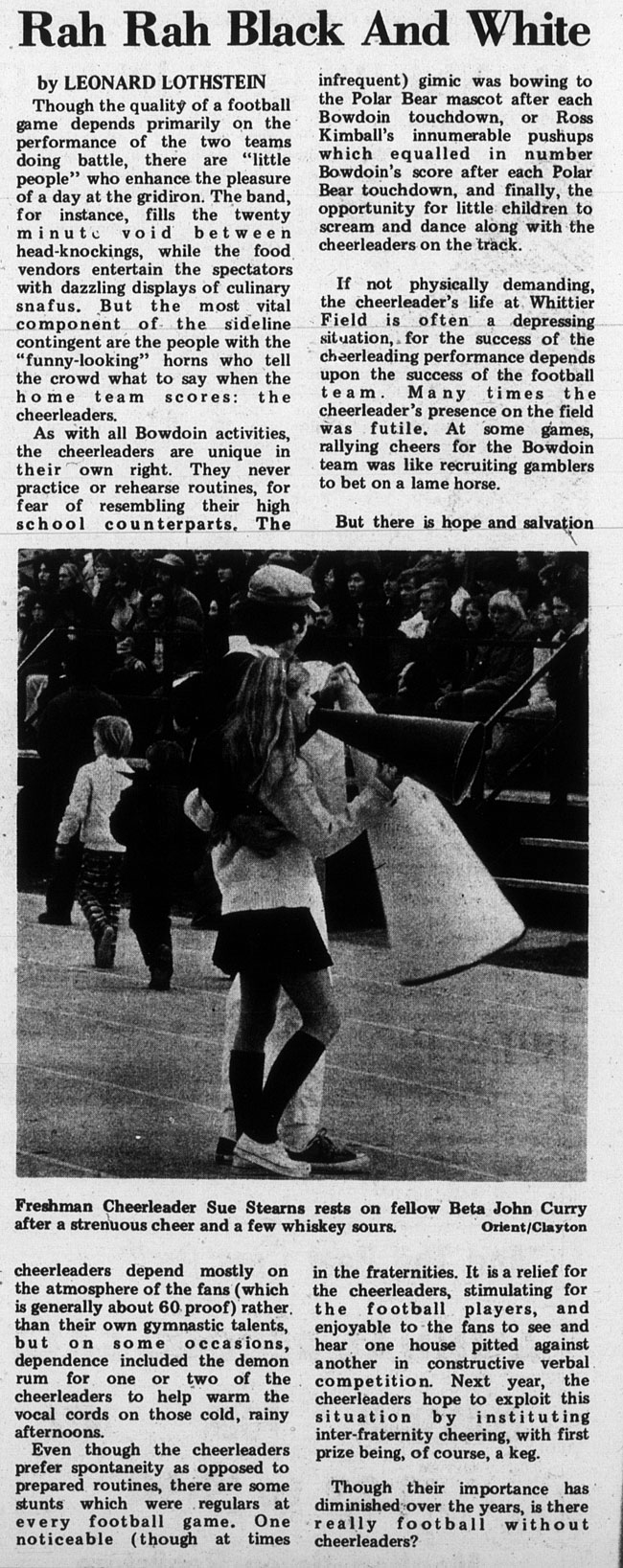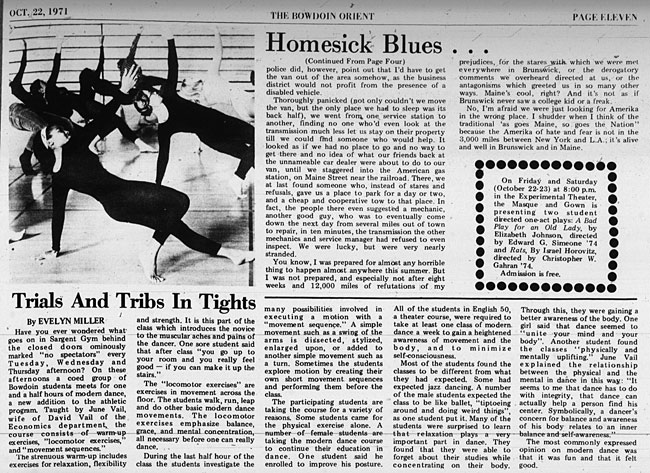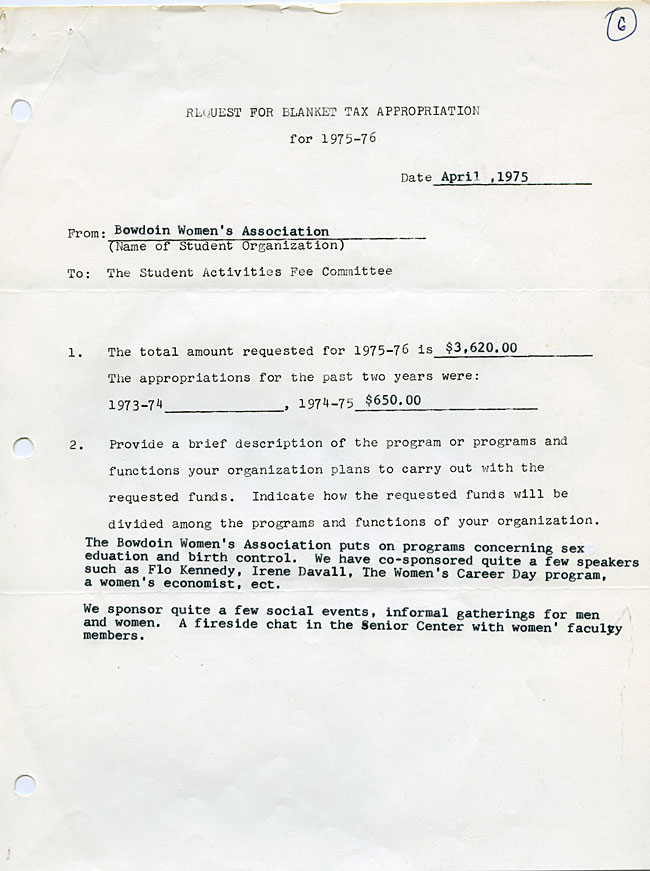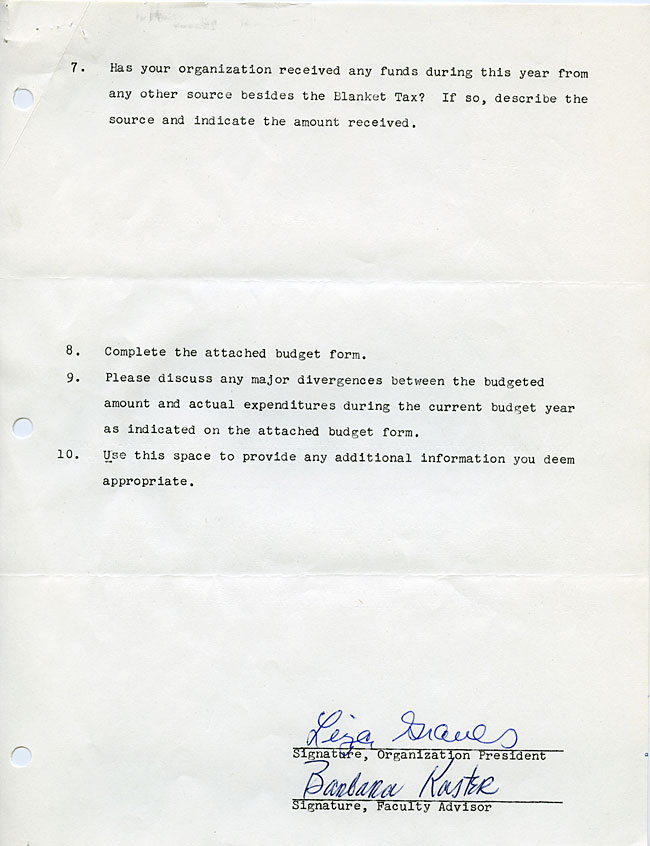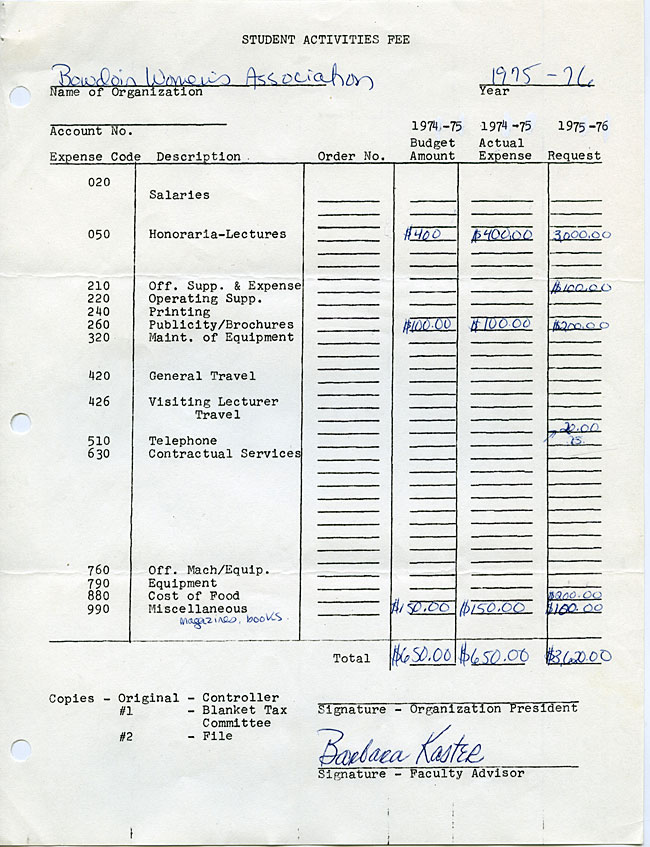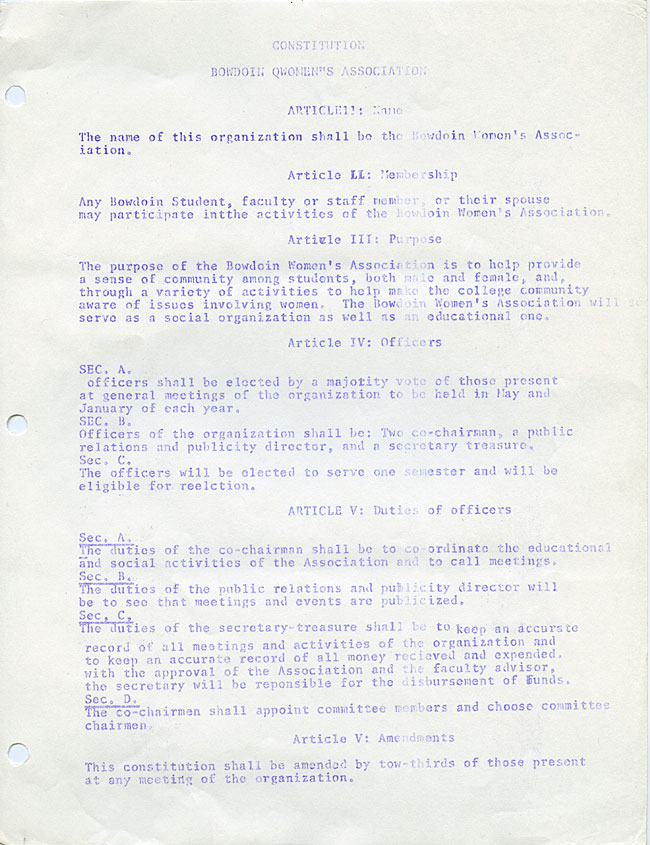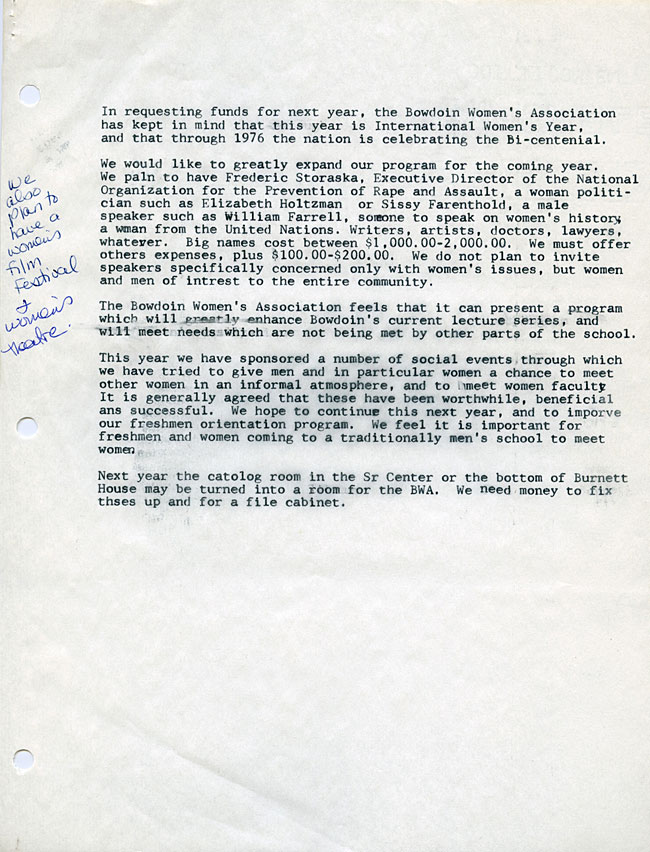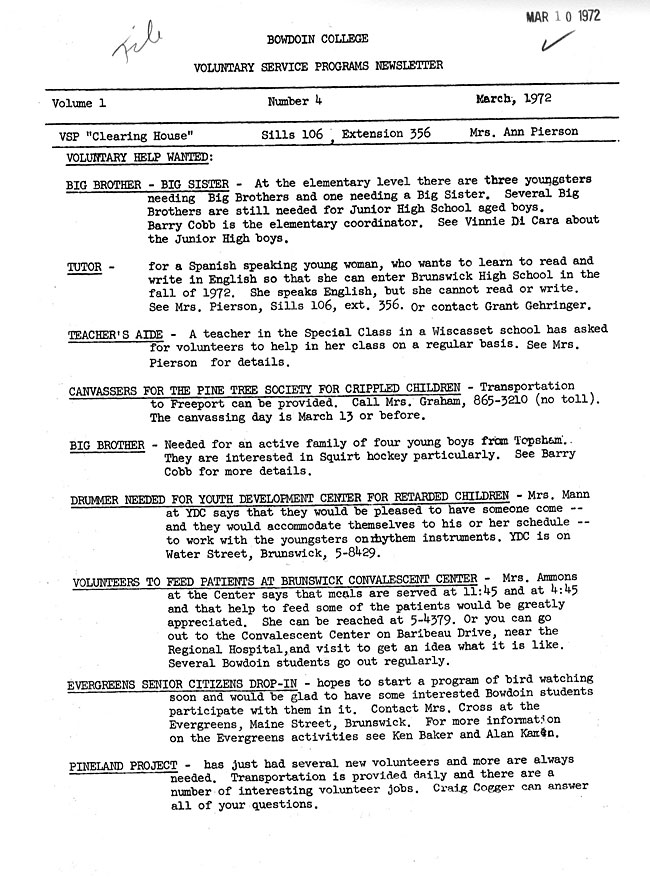A visual documentation of Bowdoin’s progression from an all-male college to a coeducational one can be found in the archives of Masque and Gown. Masque and Gown is a student run theater organization founded in 1903, sixty eight years before the arrival of women students on campus. The photos featured here illustrate Masque and Gown at three distinct points in time: when the college was an all-male institution, when the Masque and Gown began casting Brunswick women in female roles, and when the College became a coeducational institution.
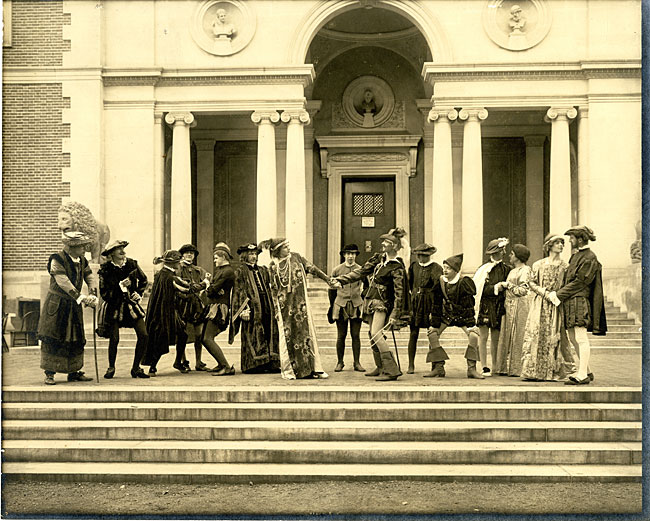
The first two photos [DocumentAG, 37.1 and DocumentAG, 37.2] are group shots from a 1920 production of The Merchant of Venice and a 1924 production of Macbeth. These photos were taken in the years when Masque and Gown productions consisted of all male casts. In 1927 Masque and Gown began casting Brunswick women in female roles, with a few exceptions.
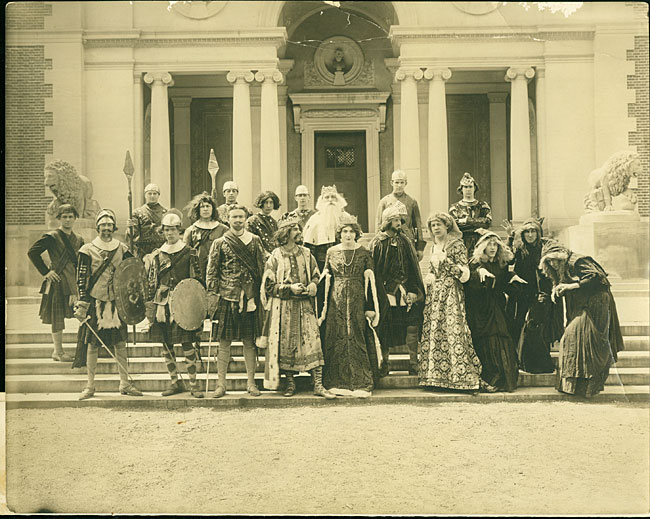
Eventually, Masque and Gown also allowed Bowdoin female staff members and faculty wives to participate in their productions. Edith Elliott, a Registered Nurse at the Bowdoin infirmary appeared as the only female in the 1937 production of Yellow Jack. The third image [DocumentAG, 37.3] shows women of the Brunswick community in the 1960 production of Playboy of the Western World. Although the names of the five women in the image are not specified, the female roles in the play are as follows. Four village girls: Susan Brady, Nelly Leahy, Honor Blake, and Sara Tansey played by Betsi Black, Cecilia Stehle, Paula Black, and Linda Sarkis respectively, Margaret Flaherty played by Paula DeCaesar and Widow Quin played by Irma Black.
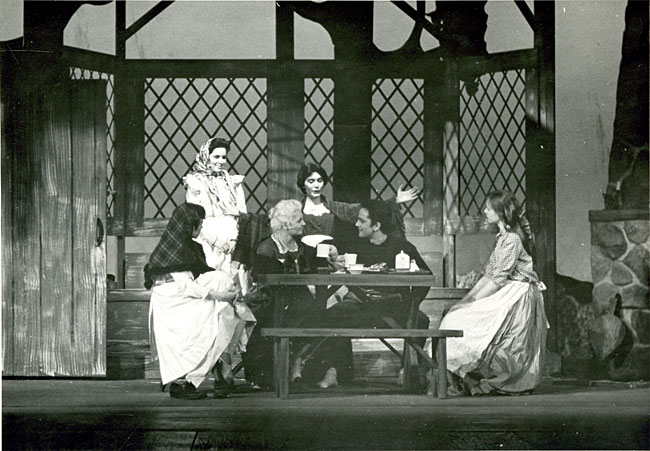
The final photo [DocumentAG, 37.4] is of the 1976 production of A Slight Ache. The particularly small cast is made up of only Bowdoin students. Brunswick women and faculty wives were eventually phased out as actresses in Masque and Gown plays and female students became the primary actresses in campus productions.
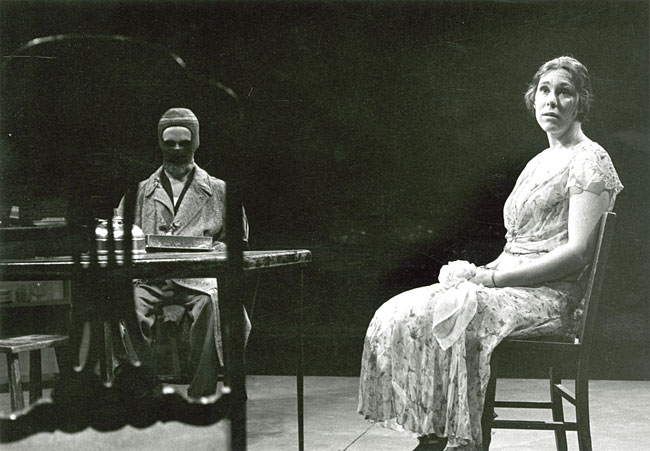
The inclusion of women of the Brunswick community as well as the participation of female staff members and faculty wives raises an interesting question: When and to what degree did women become members of the Bowdoin community? Women were not students until the 1970’s, yet before coeducation, women participated in college programs and found ways of creating communities with other women through Bowdoin. An excellent example of such a group of women is the Society of Bowdoin Women. The Society began in the 1920’s and its members consisted of women in the Brunswick community, women staff members, and faculty wives, with the only requirement for membership being that “she love a Bowdoin man.” Theodora Penny Martin suggests in “On the Outskirts: A Case Study for Kin Work in Academe” that such a society allowed women to become a part of the Bowdoin community by “defin[ing] herself in the tradition of her family”. Similarly the women who participated in Masque and Gown productions post 1927 and before coeducation were, if only for a short amount of time, part of the Bowdoin community.
